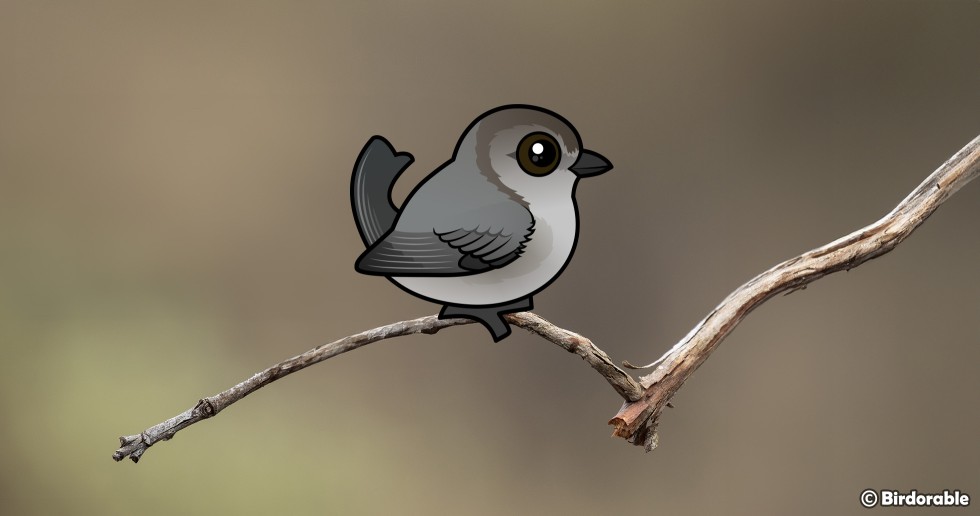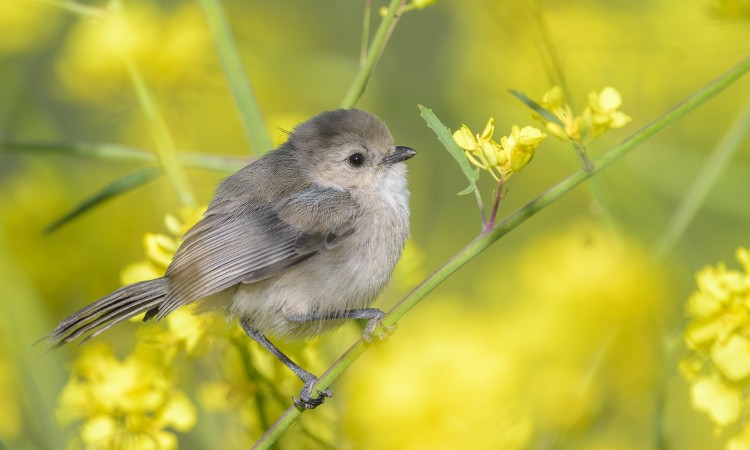Bushtit: Small Bird with Big Personality & Fascinating Breeding Habits

The Bushtit, sometimes called the American Bushtit, is a charming little bird that often goes unnoticed due to its diminutive size and subtle coloration. Measuring up to about 4.5 inches in length, this tiny songbird can be found across a wide range of habitats in western North America, from southern Canada all the way to Central America. Despite its small stature, the Bushtit plays a big role in the ecosystems it inhabits.
Bushtits have soft, grayish-brown plumage, with lighter underparts and a slightly darker face. Some populations, particularly those in interior regions, have a darker cap, giving them a more pronounced facial contrast. The Bushtit’s small, round body and short tail make it look almost spherical when perched.
Bushtits have several different recognized subspecies spread across North America, each with slight variations in appearance and range. While the most commonly referred to is the American Bushtit (Psaltriparus minimus), ornithologists recognize at least 10 different subspecies that are grouped into three subgroups, including Pacific, Interior, and melanotis.

Bushtit by Becky Matsubara (CC BY 2.0)
American Bushtits are social creatures, often found in large, bustling flocks that can number from a few individuals to over 50 birds. These flocks move through trees and shrubs with remarkable agility, constantly chattering and flitting about as they forage for food. Their diet consists mainly of small insects and spiders, which they glean from foliage, branches, and bark. In winter, they may also eat seeds and berries.
One of the most fascinating aspects of the American Bushtit’s life is its nesting behavior. These birds are known for their elaborate, pendulous nests, which are intricately woven from spider silk, plant fibers, and other soft materials. The nests hang from branches like small socks, with a topside entrance that provides access to the interior. Both the male and female work together to build the nest, which can take several weeks to complete. Once finished, the nest is a cozy, well-insulated structure that can protect the eggs and chicks from the elements.
Breeding in American Bushtits is highly cooperative, and very interesting. Pairs often raising two broods in a single season, but this is done with the help of additional male birds, who may or may not be related to either parent. Males and females incubate the eggs, which takes less that two weeks before the chicks hatch. During this period, and while the chicks are being cared for after hatching, all of the attendant adults who are caring for the chicks may roost together in their pendulous nest! This cooperative breeding behavior is relatively rare among birds and highlights the strong social bonds within Bushtit flocks.
Bushtits are not particularly loud, but they have a variety of soft, high-pitched calls that they use to communicate with each other. Their calls include a mix of chips, trills, and twittering sounds, which help keep the flock together as they move through dense vegetation. They do not sing a typical song.
The Bushtit is a new addition to our Birdorable family. They belong to our Tits, Chickadees & Kinglets group, and are most closely related to the Long-tailed Tit of the Old World.

















Comments
Leave a comment
Thank you!